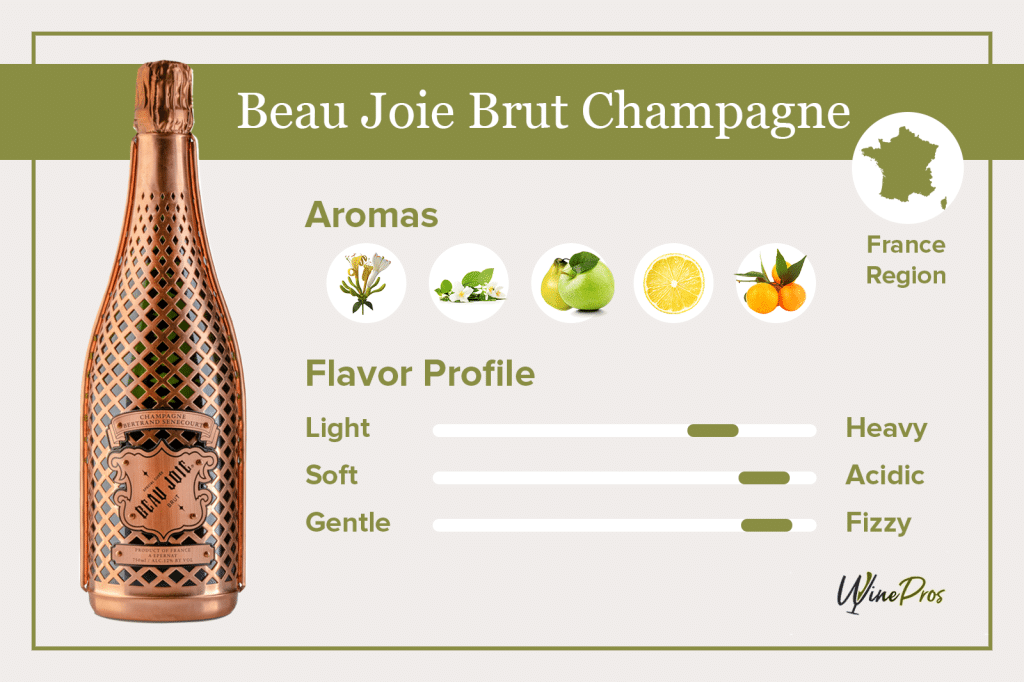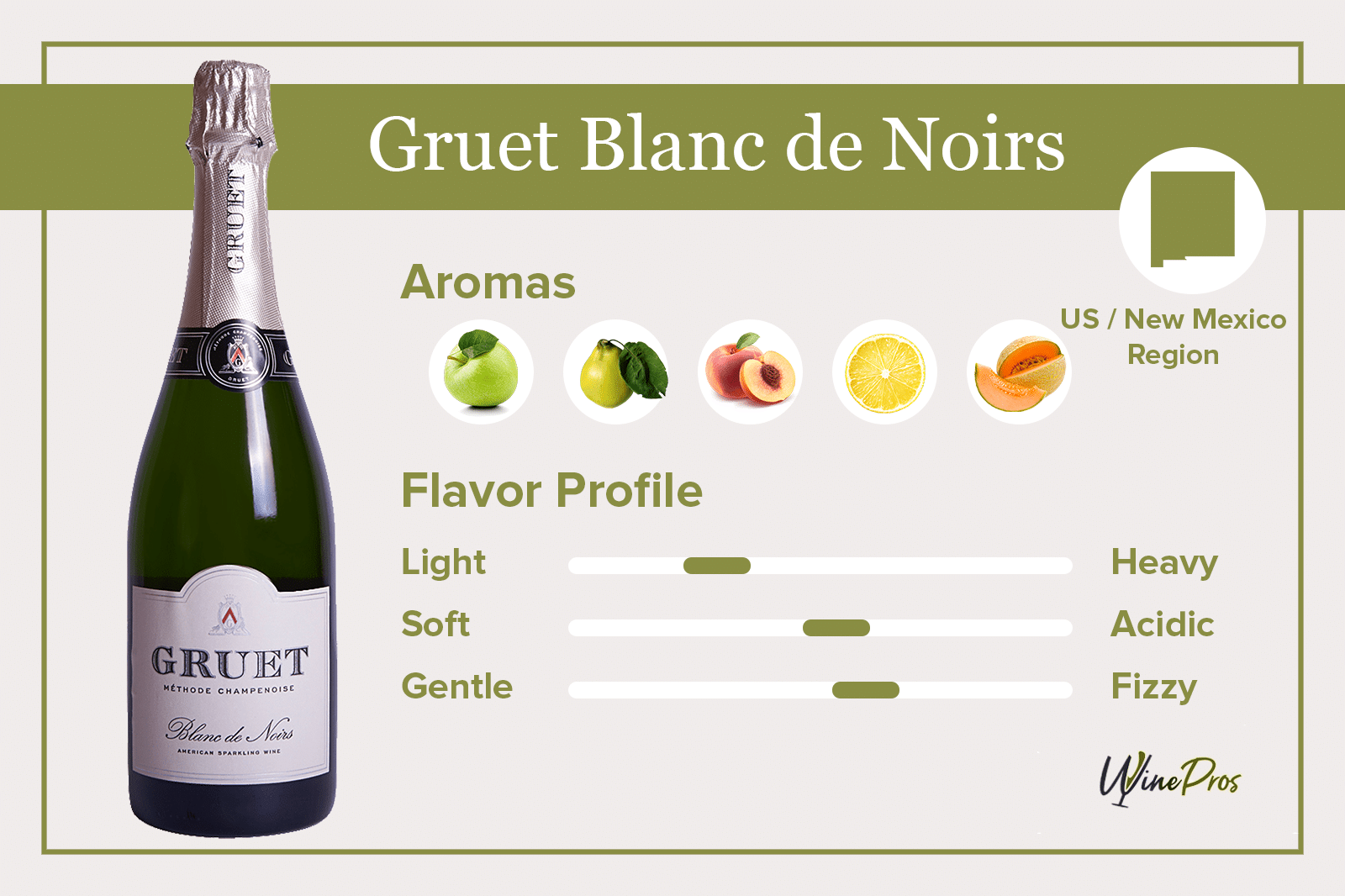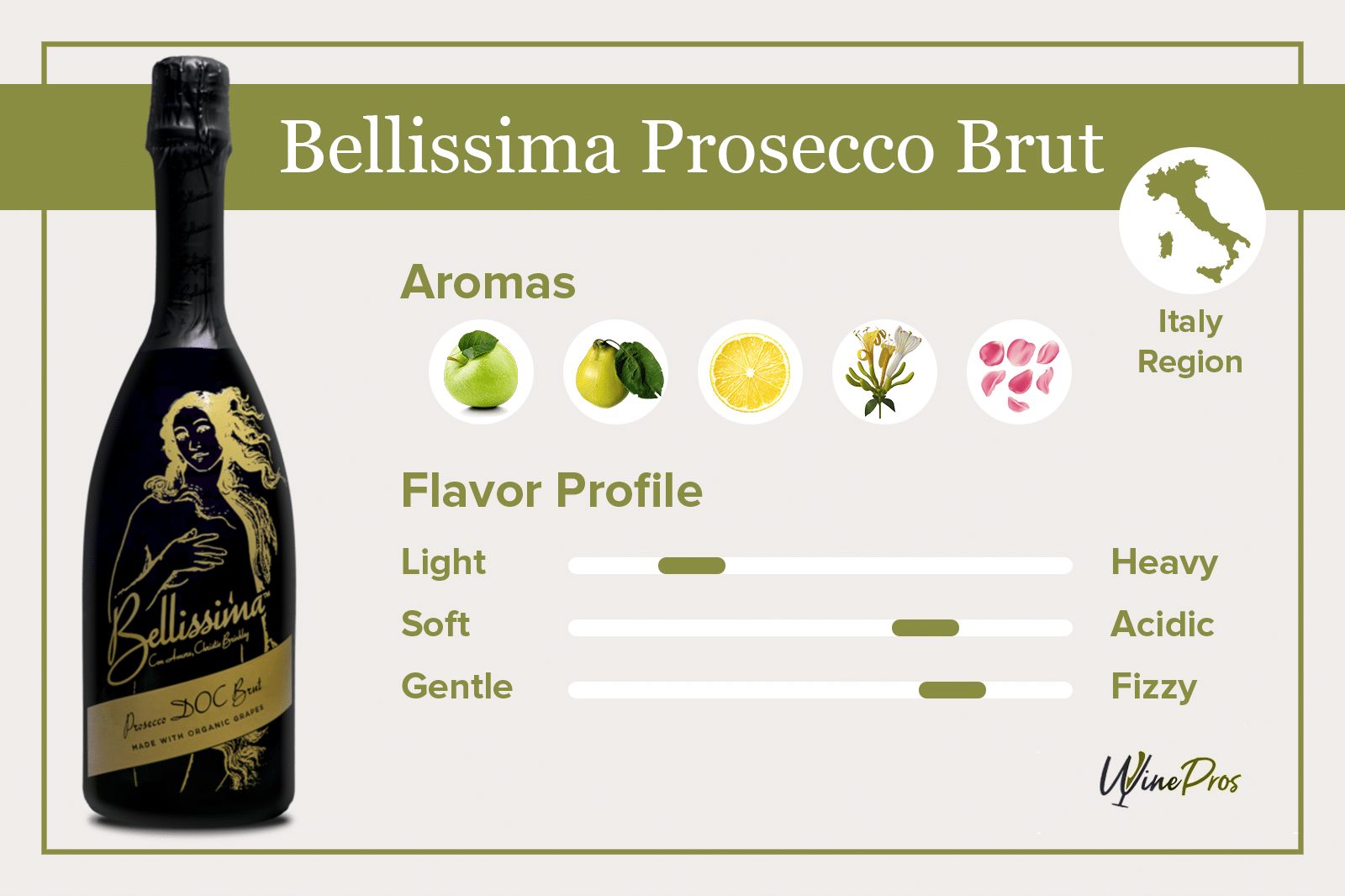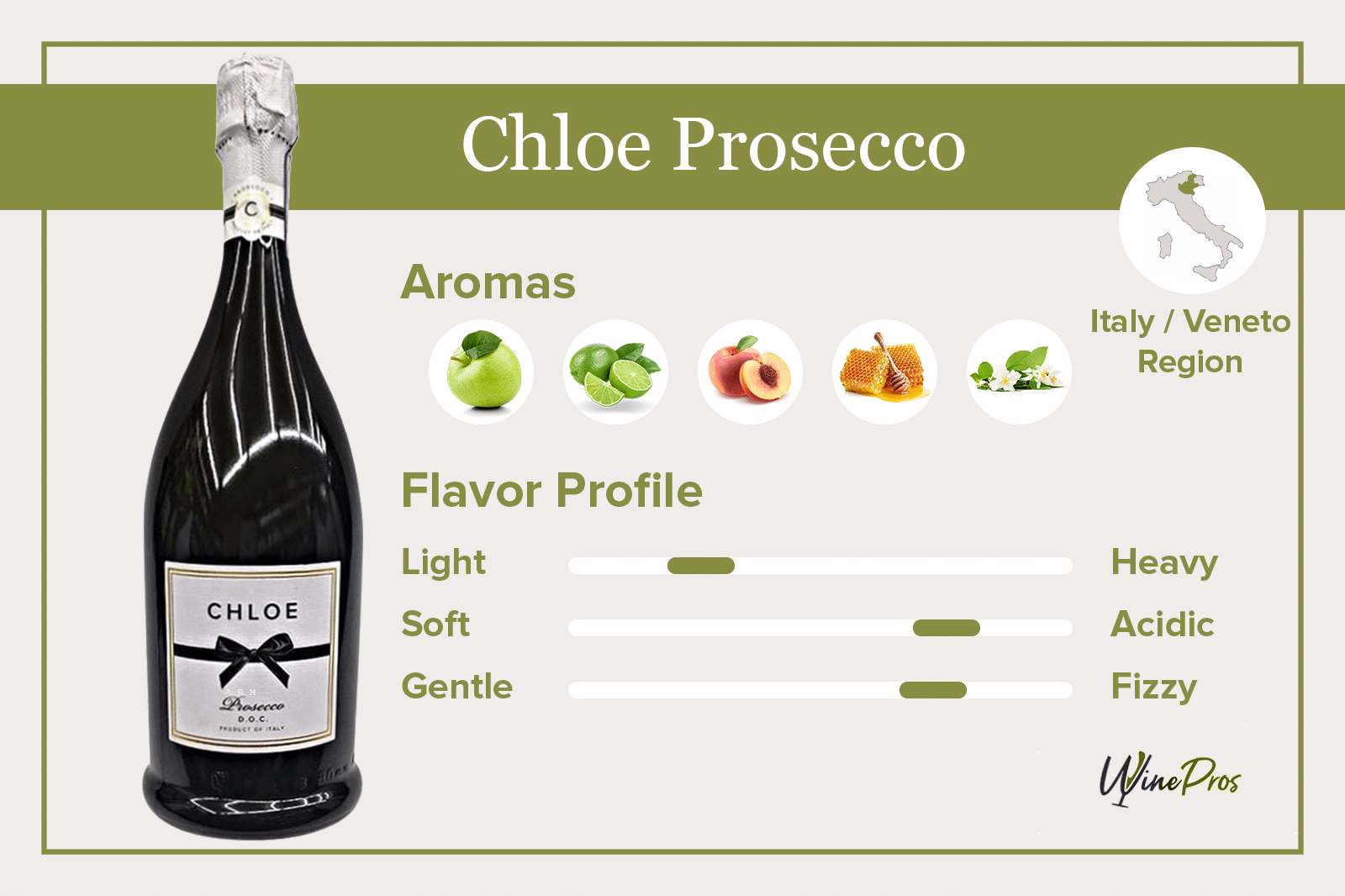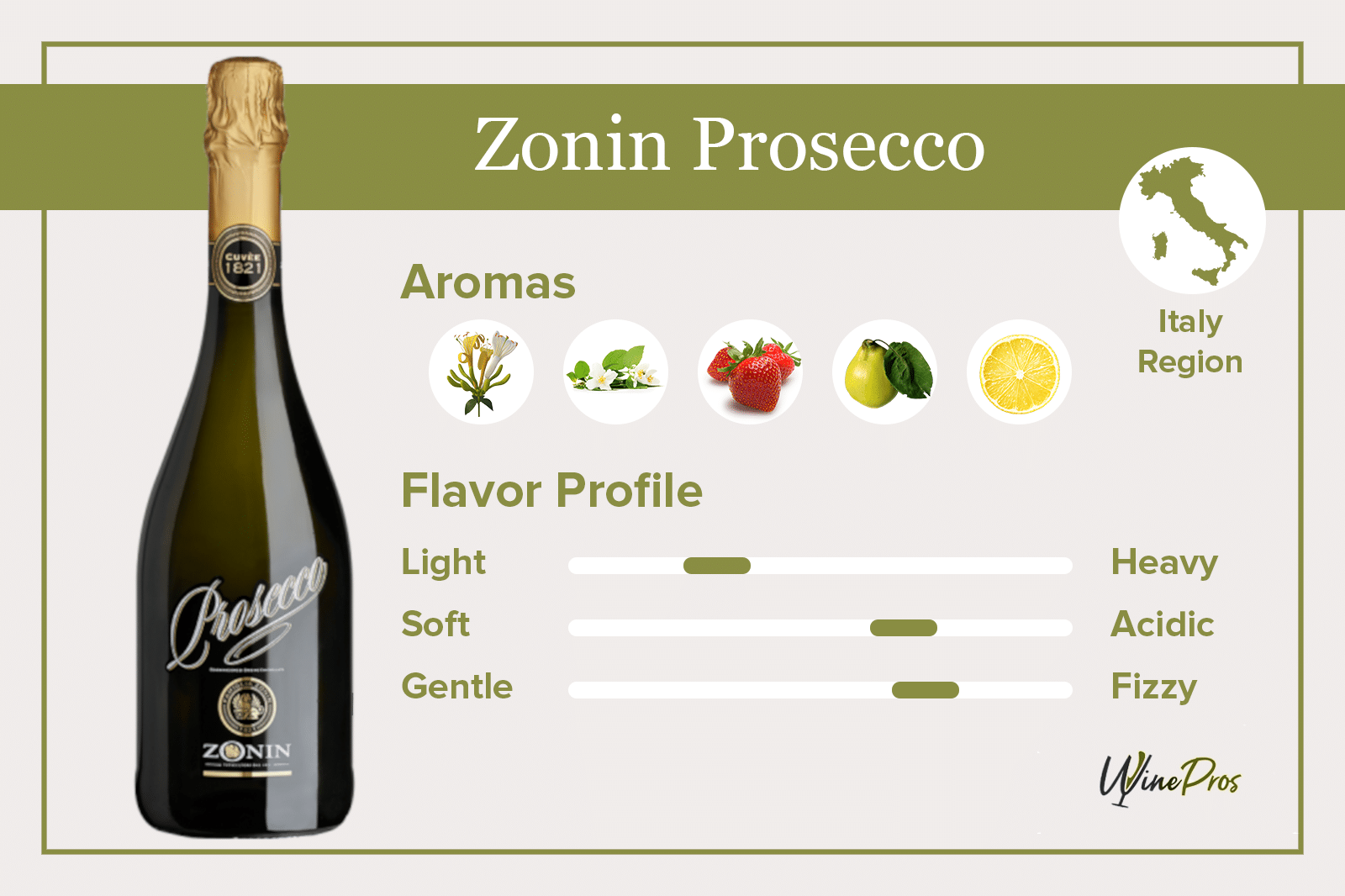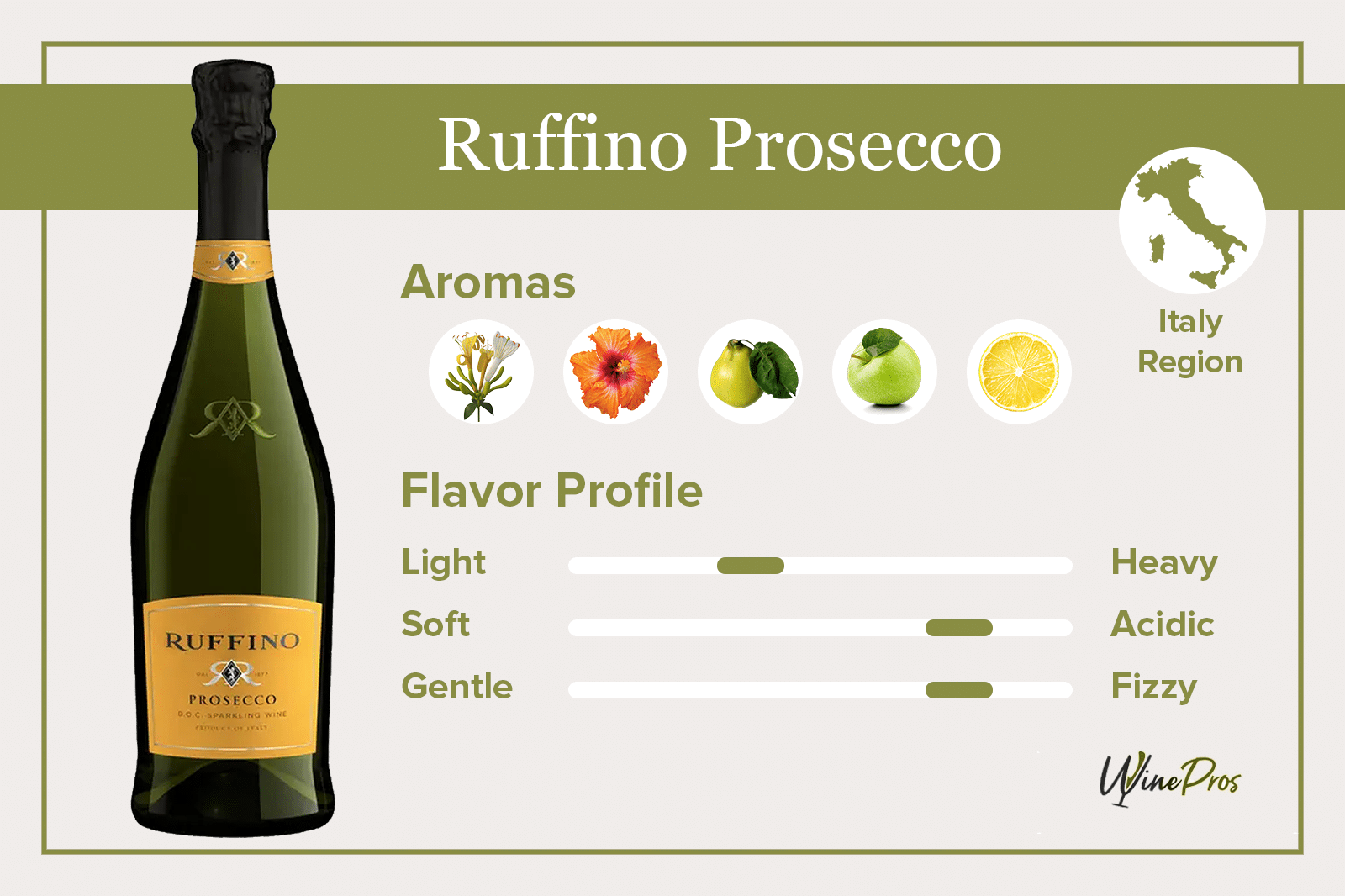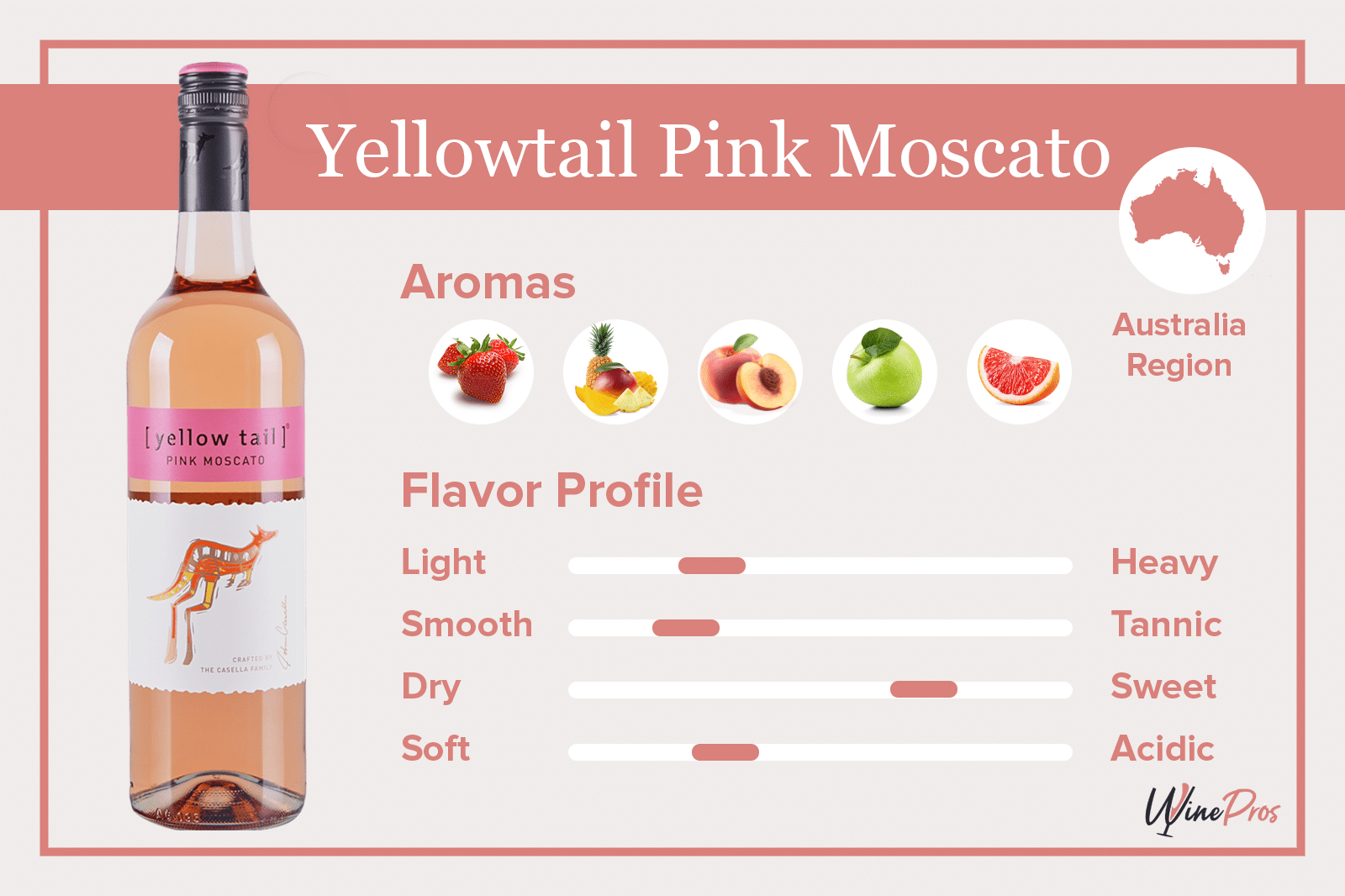What Kind of Wine Is Beau Joie Brut Champagne?
Beau Joie Brut Champagne is a Zero Dosage Champagne, perfectly balanced. It has a yeast bouquet, light and palatable body, and a creamy, lingering finish. Champagne has been the sparkling wine of choice to celebrate special events for a long time. Its reputation as a luxury and high-quality beverage has been intact since the 5th Century when Romans established vineyards in Reims.
However, sparkling Champagne was discovered in the 16th Century by Benedictine Monks. As weird as it may sound, early Champagne vintages were described as the devil’s wine because some of the bottles exploded due to the pressure from the carbon dioxide. Over the years, significant improvements to both the cork and bottle have been developed.
Beau Joie Brut Champagne Review
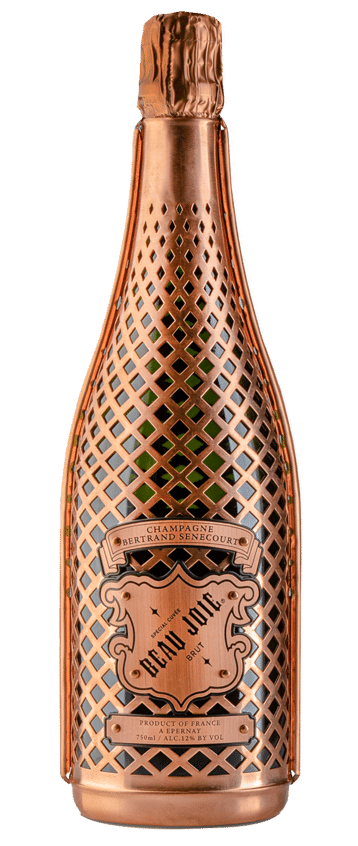
- Winery — Beau Joie
- Country/Region — France, Champagne
- Type — French Brut Champagne
- Aroma — Honeysuckle, Jasmine, Apple, Pear, Lemon, Tangerine, Brioche Bread, Wet Straw, Almond
- Grapes — 60% Pinot Noir, 40% Chardonnay
- Taste — Mango, Peach, Grapefruit, Cherry, Plum, Sourdough, Toasted Bread, Honey, Chocolate, Toffee, Dried Nectarine, Vanilla Spice
- Alcohol Content — 12%
- Sugar — Dry
- Pairing — Steak, Fried Chicken, Shellfish, Smoked Salmon, Pastrami, Fruit-based Desserts, Shortbread Cookies, Creamy French Cheeses
Beau Joie Brut Champagne is an outstanding Zero Dosage Champagne. Perfectly balanced with a fine mousse, it stands out from the competition. It is solid with complexity and top-notch packaging. Punchy yet mellow, Beau Joie Brut Champagne makes a perfect gift to business partners. Sure, it is expensive and not your average bubbly, but that is why it is fantastic. You have to buy it, at least once, to see how an authentic, high-quality Champagne tastes!
Tasting Notes
Beau Joie Brut Champagne shows fragrances of white flowers on the nose, accompanied by aromas of green and citrus fruit. On the palate, the wine is lush, with exotic and stone fruit flavors which mingle with apple and pear tastes. A flood of yeasty sensations is the factor that defines the mouth, though, as touches of chocolate and toffee add structure and depth. The acidity is crispy, complementing the energetic but creamy mousse, while the finish is long with dried fruit tones.
Appearance
Beau Joie Brut Champagne wine has a grand, beautiful appearance. As you pour it into the glass, this bubbly shows its magnificent yellowish-orange color, close to beige. Over time, golden tints appear near the rim, adding depth to the ultra-clean core. The tears of Beau Joie Brut Champagne are long and very watery, contributing beauty and grandeur.
Aroma
Honeysuckle and jasmine open the Beau Joie Brut Champagne nose. Next, brioche bread aromas and green fruit fragrances, such as apple and pear, join citrus notes of lemon and tangerine, creating the traditional Champagne aromatic bouquet. Last but not least, hints of wet straw and almonds are also present on the nose, offering added aromatic intensity.
Taste
Beau Joie Brut Champagne is as classic as it gets on the palate. And that’s a great thing. First, it exhibits tropical and stone fruit character, with mango and peach tastes. But as the initial flavors subside, bright grapefruit, cherry, and plum notes surface, extending the fruity experience. Then, the pronounced Champagne yeasty elements emerge. Brioche bread, sourdough, and toasted bread flavors dominate the mouth. In fact, with every subsequent sip you taste yeast and cream. Touches of dark chocolate and toffee are present, too.
As to the bubbles, they are smooth and buttery, with a consistent flow. They are also racy and not shy, providing a steady and pleasant effervescence. So, Beau Joie Brut Champagne’s bubbles are fine. They remind of shooting stars, spiraling upwards towards the nose, brimming with charm.
Finish
Beau Joie Brut Champagne has a long and lingering finish, concluding the flavor profile triumphantly. Flavors of dried nectarine, vanilla spice, and honey texture characterize the aftertaste. Plus, as expected from such a premium Champagne, there is no trace of bitterness. As such, the ending is smooth, creamy, and palatable. A perfect conclusion to a splendid Champagne.
Rating
Beau Joie Brut Champagne is an absolutely delicious sparkler with fine bubbles. And undoubtedly, it is a prime example of dedicated French wine-making. There is a reason why the Champagne region is believed to produce the best bubbly in the world, and Beau Joie Brut Champagne might well be that reason. Expressive beyond comparison, if you want to taste perfection, look no further than Beau Joie Brut Champagne.
Beau Joie Brut Champagne Food Pairing
Sparkling wines may come in many styles, including Champagne, but, in general, most sparklers pair with the same type of food. Overall, they show a perfect balance of bubbles, freshness, dryness or sweetness, and fruity cream, enriching any dinner. Feel free to pair Beau Joie Brut Champagne with a juicy Rib-eye steak, as the tannin structure of the meat blends perfectly with the creamy mousse.
Next, try the wine with fried chicken, an assortment of shellfish, grilled calamari, or smoked salmon. Furthermore, a delicious pastrami sandwich is also super tasty with Joie Brut Champagne. Fruit-based desserts or shortbread cookies make a fun pairing combo, too, because the acidity of Champagne cuts through the buttery texture of the cookie.
Frequently Asked Questions
Who Makes Beau Joie Brut Champagne?
Beau Joie Brut Champagne is a product of Beau Joie, a relatively new French winery. Situated in Epernay, the core of the Champagne region, it was founded in 1972 by Charles Ellner. The founder was a professional horse rider who had been buying vineyards on the site and making small production Champagnes for a selected clientele. Since then, however, Ellner has grown to become a highly esteemed family-owned brand. Today, their house encompasses over 54 hectares of vineyards in the Région de Sézanne and Valle de la Marne, producing about 1 million bottles annually. Almost 70% of the production is Domaine, from estate vineyards, whereas the other 30% is purchased from cooperatives.
Beau Joie has a distinctive and unique image. Encased in 100% handmade copper armor, Beau Joie is elegant and also environmentally friendly, as the copper is recycled. The casing is inspired by the armor of French knights who used to protect the Kingdom of France and the copper roofs of Paris. The so-called Suit of Armor acts as a grip for pouring the wine, with a rubber thump grip in the punt of the bottle. Each Champagne bottle also has a different patented design.
How Is Beau Joie Brut Champagne Made?
Beau Joie Brut Champagne is a classic Champagne made from a blend of 60% Pinot Noir and 40% Chardonnay. Therefore, it is produced with the traditional champagne method. First, harvesting is by hand for the best selection of grapes. Then, the grapes are pressed in a highly controlled environment and release the first liquid, known as ‘cureé’, and the second called ‘taille’.
Following harvest, the base wine is made. The cureé and taille blend together and are placed inside stainless steel vessels to undergo cool fermentation. The resultant wine is dry, with neutral flavors and high acidity. At this point, blending takes place between the Pinot Noir and Chardonnay. This step enhances the complexity and improves the balance of the wine.
It is good to mention here that Pinot Noir brings red fruit, body, and structure to the blend, while Chardonnay contributes citrus flavors, longevity, and finesse. Next, the base wine goes into bottles, and ‘liqueur de tirage’ is added (yeast, yeast nutrients, sugar, clarifying agent). The bottles are closed with a crown cap and a plastic cap inert. They are stacked horizontally at cool temperatures as the second, slow fermentation takes place inside them. Keep in mind that the carbon dioxide generated by the yeasts is responsible for creating the bubbles.
Beau Joie Brut Champagne spends 18 months on the lees, a process that is known as yeast autolysis. These lees give brioche bread and biscuit notes to the final wine. Autolysis lasts from five months to even ten years and manages to keep the wine fresh. The sediment of lees created during yeast autolysis is removed by riddling and disgorgement. This can be either done mechanically with a gyro palette or manually where a winery worker gives a slight shake and twist to the bottles on a day-to-day basis. The yeast sediment gradually slides down to the side of the bottle collecting in the plastic cup inert in the crown cap.
Once riddling is over, the upturned bottles freeze in a clod brine solution. Freezing the wine freezes the lees inside the neck. The crown cap is removed, and the pressure of the carbon dioxide ejects the frozen wine, the yeast sediment, and the plastic cap inert. ‘Liqueur d’expedition’ (wine sugar) is added to replace the lost wine. The bottles are sealed with a cork and secured with a wire cage. The amount of sugar in the ‘liqueur d’expedition’, known as dosage, determines the level of sweetness. Beau Joie Brut Champagne is Zero Dosage, so the amount of dosage is zero.
Where Is Beau Joie Brut Champagne Made?
Beau Joie Brut Champagne, as its name suggest, is produced in Champagne, the most prestigious wine-making region in the world. This region is home to some incredibly high-quality Pinot Noir and Chardonnay plantings. In Champagne, there is the only appellation: Champagne. That said, certain villages and towns within the region have a premier (44) or ‘grand cru’ (17) status—the highest classifications of French wine quality. Unlike in Burgundy or Alsace, the ‘cru’ states in Champagne refers to the whole village, not some specific vineyard or plot of land. As a consequence, there will be some outstanding sites within villages that have lower ratings.
In the same way, not every area within a town rated ‘grand cru’ will offer the same quality of grapes and have the same potential. Within Champagne, there are five sub-regions where most of the vineyards are concentrated. These span over an extensive area, with three of the most renowned sub-regions located close to Reims and Épernay, the major wine production centers. The regions are: Côte de Sézanne, Côte des Blancs, and Vallée de la Marne. Champagne has a cold and continental climate. Viticulture is a challenge, as growers must contend with winter freeze, spring frosts, and rainy weather. Even in the warmest years, grape sugar levels remain low and acid levels high, making this region ideal for sparkling wine production.
The gravest challenge in the vineyard is frost, though. To minimize this threat, growers choose to plant their vineyards on slopes. The soils in Champagne show a great concentration of chalk, which offers good drainage after rainstorms but retains a sufficient quantity of water in dry periods where irrigation is impossible. Most Champagne producers, including Beau Joie, are committed to sustainable agriculture and recycling, aiming to reduce man-made pesticides and fertilizers as much as possible.
How to Serve Beau Joie Brut Champagne?
Beau Joie Brut Champagne is undeniably elegant with a creamy and stimulating mousse. Without a second thought, serve the wine in Champagne coupe or flute glasses. Whichever stemware you choose, you are guaranteed to enjoy your premium Champagne. That said, there are a couple of differences between the glasses which are worth considering.
The Champagne coupe is sexy and romantic at the same time. It is reminiscent of the 1930s Hollywood movies and dates back to the Victorian era when it was considered staple glassware in ‘Soirées’. Despite its elegance, however, the coupe’s wide bowl does not preserve the bubbles as well as the Champagne flute, creating an uninspiring beverage once said bubbles subside. On the contrary, the flute seems to be the more appropriate choice when serving a high-quality Champagne with racy bubbles, as it encourages bubble flow. Also, it enhances the green fruit fragrances of Champagne.
As a friendly reminder, touching a flute glass by the bowl and not by the stem is blatantly wrong. The heat of your body transfers to the wine, altering its temperature and malfunctioning its taste. The ideal temperature to serve Champagne is well-chilled at 47-50°F (8-10°C). If you chill Beau Joie Brut Champagne more, get ready to numb the taste buds. On top of that, avoid chilling a Champagne bottle in the freezer, as tempting as it may be, and never serve it in previously chilled glasses to avoid losing the sparkle.
What is more, Beau Joie Brut Champagne has to stay cool during service. To do that, use an ice bucket. The bucket should be filled three-quarters full with equal quantities of ice and water so that iced water surrounds the bottle. The water is then able to transfer the heat from the bottle to melt the ice. Air acts as an insulator, and the bottle chills. Be careful, though, as over-chilling mutes flavors in wines.
How Much Does Beau Joie Brut Champagne Cost?
Beau Joie Brut Champagne commands a premium price. As a traditional Champagne, that should not be surprising, as Champagnes are some of the most expensive wines. Beau Joie Brut Champagne price ranges from $50 to $150 per 750ml bottle, depending on the vintage, vendor, and cuvée (quality of the first-pressed wine). Consequently, Beau Joie Brut Champagne is expensive and certainly not within every wine enthusiast’s budget. That said, it is indeed a prime example of French wine-making., boasting an impeccably balanced palate. Beau Joie Brut Champagne’s quality is supreme, so the high price is justified.
How Long Does Beau Joie Brut Champagne Last?
Beau Joie Brut Champagne does not expire. If you store it unopened, you can expect it to keep fresh and stimulating anywhere from 3 to 5 years. That’s for the lowest-priced Beau Joie Brut Champagne. However, a vintage bubbly is longer-lived than a non-vintage one, continuing to develop and improve for over a decade. Consequently, bottle-aging benefits Champagne immensely. Once opened, though, Champagne lasts up to three days in the fridge. To mature Beau Joie Brut Champagne, store it in an environment with room temperatures that do not fluctuate (50-60°F or 10-13°C) and a portion of humidity. A dark, damp cellar would be the best choice, but not every wine fan has access to such privileges.
In every case, direct sunlight or artificial light should be kept at bay, as they may cause irreversible damage. Intense exposure to light rearranges the chemical compounds found in wine, like oxygen and temperature, and causes wine faults. That means that the wine ages prematurely, and its aromas, flavors, and even color change for the worse. The resulting wine is known as light-struck. Odors also must be avoided, as they might find their way inside the bottle. If they do, they usually instill unwelcome aromas and flavors, like intense animal sweat or vinegar. Additionally, bear in mind that if you let a Champagne bottle-age for far too long, the bubbles subside and might disappear.
How Many Calories Does Beau Joie Brut Champagne Have?
Like most Champagnes, Beau Joie Brut Champagne is not a high-calorie-dense wine. For example, in 1 fluid ounce of the drink, there are 19 calories, equating to approximately 95 calories per glass. The calorie breakdown is 0 grams of fats, 0 grams of sodium, 2 grams of total carbs, 0 grams of protein, and 0 grams of total sugars, as a Zero Dosage Champagne. Beau Joie Brut Champagne calories, therefore, are low. So, wine fans on a diet do not have to worry when consuming this wine. In fact, it is such a perfect dietary choice that it can even be served during breakfast.
Furthermore, the Beau Joie Brut Champagne alcohol content sits at 12%, a typical alcoholic concentration for Champagne. Do check the label on the bottle to be more precise, however, and always drink responsibly, avoiding excessive consumption. Also, remember that unless designated on the label, wines are not vegan. During wine-making., wines are clarified through fining, where the most commonly fining agents are animal-based. Vegans, consequently, must consider this before sipping Beau Joie Brut Champagne. In most cases, though, Champagne wines are vegan, which is super!
Conclusion
Beau Joie Brut Champagne is an outstanding Zero Dosage Champagne. Perfectly balanced with a fine mousse, it stands out from the competition. It is solid with complexity and top-notch packaging. Punchy yet mellow, Beau Joie Brut Champagne makes a perfect gift to business partners. Sure, it is expensive and not your average bubbly, but that is why it is fantastic. You have to buy it, at least once, to see how an authentic, high-quality Champagne tastes!

